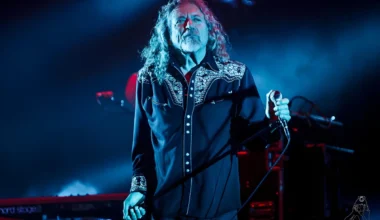Foo Fighters have long been seen as a tight-knit rock family. Even during the band’s difficult moments in the 2000s, when breakup rumors circulated, Dave Grohl knew the group worked best when they were together. For Grohl, collaboration with other musicians was crucial, but that didn’t mean he was open to every offer.
In the mid-’90s, Foo Fighters were still evolving, and the attention on them was overwhelming. At the time, Grohl was still in the process of figuring out what his post-Nirvana project would become. Despite the growing pressure, he and his bandmates moved forward, though not without some bumps along the way.
When it came time to record The Colour and the Shape, they lost two key members: William Goldsmith, who quit after learning he wouldn’t be playing on the record, and Pat Smear, who decided to step away from the relentless cycle of touring.
But Grohl had connections across rock and roll. His old friend Franz Stahl, from their days in Scream, seemed like the natural choice to replace Smear. They had history together, but after playing a few songs, it was clear that Stahl didn’t bring the same chemistry as the rest of the band, leaving Foo Fighters as a trio during the recording of There Is Nothing Left to Lose.
Despite a few lineup changes, several big names eyed the open spot in the band. One of them was Tracii Guns, the guitarist from the once-dominant hair metal band LA Guns. In the wake of the hair metal collapse post-1991, Guns sought to join the grunge-heavy Foo Fighters, likely looking for a comeback.
However, Grohl had no interest in entertaining that idea. In an unapologetic statement, he said, “He gave us his phone number. F*ck him. I haven’t talked to him, and I think I’ve lost his number already. Let’s just leave it at that.”
The history between Guns and Nirvana likely played a role in Grohl’s refusal. Guns had been part of the original lineup of Guns N’ Roses before it became the iconic group everyone remembers. Given the past tension between Nirvana and Guns N’ Roses, it made sense that Grohl wasn’t ready to bury the hatchet just yet.
As the years went by, Foo Fighters settled into their current sound—a three-guitar assault with Smear returning to the fold. Their lineup has remained stable since, striking the perfect balance, especially on albums like Wasting Light, where every guitarist has a crucial role in shaping the band’s powerful sonic landscape.







